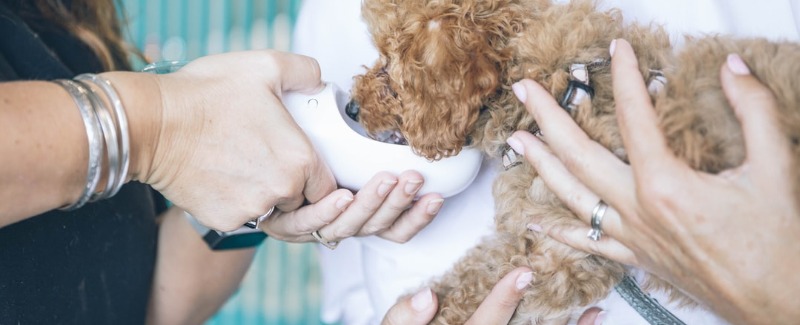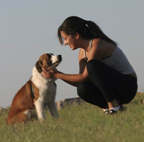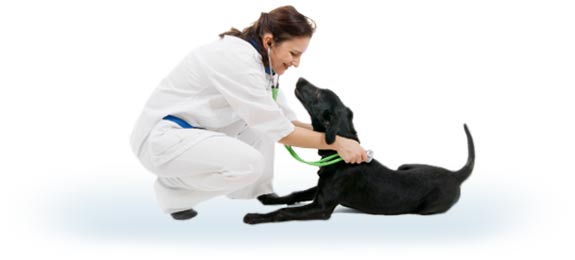One of the most important people in your dog’s life is her veterinarian. If you start out with a puppy, you’ll get to know your vet pretty well in the first year. And of course, accidents and illnesses — minor and major — can occur despite even the best intentions and efforts. The time to develop a relationship with your vet is before such an event occurs.
Routine Care
Contents
Your dog will need to see the vet at least once every year for her annual checkup, heartworm, and intestinal parasite tests. In many areas, dogs are routinely tested for Lyme disease in combination with the heartworm test. Depending on your dog, your vet, and your personal preferences, you may also want to have blood work, vaccinations, or titer tests.
Your dog will also need to be spayed or neutered, usually around the age of six months. Leave breeding to the professionals who are committed to improving the breed, and let your kids learn about the miracle of life from a DVD. It’s not worth losing your dog in whelp (giving birth). Also, it’s expensive and a full-time job raising puppies.
Heat cycles are messy and last for three weeks, usually twice a year, and leave your dog vulnerable to mammary cancer. If you have a male dog, he’ll be much easier to live with, and will have a much lower tendency to run away or develop aggression problems if he’s neutered. You’ll also eliminate the possibility of testicular cancer and prostate cancer as he ages.
Your dog’s vet should check out unusual or foul smells coming from any part of your dog’s body. Maybe your dog just needs his teeth cleaned, but better safe than sorry.
Minor problems are bound to crop up in your dog’s health. Skin and ear infections are common, as are urinary-tract infections and minor accidents. You are your dog’s best friend in more ways than one. It is your careful observation of your dog, his body, and his behavior that will help you catch any health issues before they become serious. At least once a week, thoroughly examine your dog’s eyes, ears, mouth, body, and limbs, noting any unusual appearance, including lesions, pustules, growths, or the presence of parasites like fleas or ticks.
When to Seek Emergency Care
Before you need it, know what your veterinarian’s policy is for afterhours emergencies. For some reason, serious veterinary emergencies usually occur outside of normal business hours. Many areas have veterinary emergency clinics that are open after normal hours. Write down the number near the phone and take a drive there one day so you won’t have to try to find it when you’re already distracted by an ill or injured dog and your emotions. If you do need to visit the emergency clinic for real, always call before you leave the house so the staff can prepare to take care of your dog immediately when you get there.
- An obviously broken or seriously injured limb (your dog will not bear any weight on it, or it hangs at an odd angle).
- Being hit by a car — even if it doesn’t immediately appear serious, your dog could have internal injuries or head trauma that aren’t obvious.
- Unexplained or profuse bleeding.
- A bite or scratch from another animal that breaks the skin, especially punctures or bites that swell or bruise severely.
- Sudden swelling, especially of the face, which often indicates a serious allergic or anaphylactic reaction to a vaccine or insect bite)
- Eye injuries, even apparently minor ones, can turn major in a short time. Get them checked ASAP.
- Ingestion of toxic substances.
- Heatstroke or hypothermia/ frostbite.
- Burns.
- Any sudden dramatic behavior change including respiratory distress, aggression, or neurological signs like seizures or circling blindly.
The best thing you can do for your dog in an emergency is to breathe and stay calm. Panicking won’t help, and could even get you injured if you use adrenaline to guide your actions instead of your good sense.
Use extreme caution when approaching or touching a sick or injured dog. Even the nicest dog can bite if he’s sick, scared, or in pain. Fashion a muzzle out of a piece of rope or a leash, and get help if possible before moving the hurt dog.
Bloat
Bloat is always a veterinary emergency. This condition, which strikes terror into the hearts of many owners of deep-chested breeds, like Doberman Pinschers and Great Danes (although any breed can be affected), is a simple term for gastric dilatation and volvulus, which causes the stomach to fill up with air, and if left untreated, twist. There is some evidence that feeding dogs a grain-free diet from elevated feeders, in addition to resting the dog for an hour before and after meals, can help reduce the chances of bloat, but it is a very real threat for susceptible dogs. This is a life-threatening condition requiring immediate treatment.
Alternative Medicine and Therapies
There are a variety of alternatives to traditional or Western medicine, including homeopathy, acupuncture, chiropractic, and herbal-and flower essence remedies, in addition to several types of physical therapy, healing, and therapeutic touch. Veterinarians who practice alternative, complementary, and integrative medicine, sometimes in addition to traditional treatments, are often referred to as holistic practitioners. What this really means is that they approach treatment from the view of the whole dog, not just the acute symptoms of the current problem.




